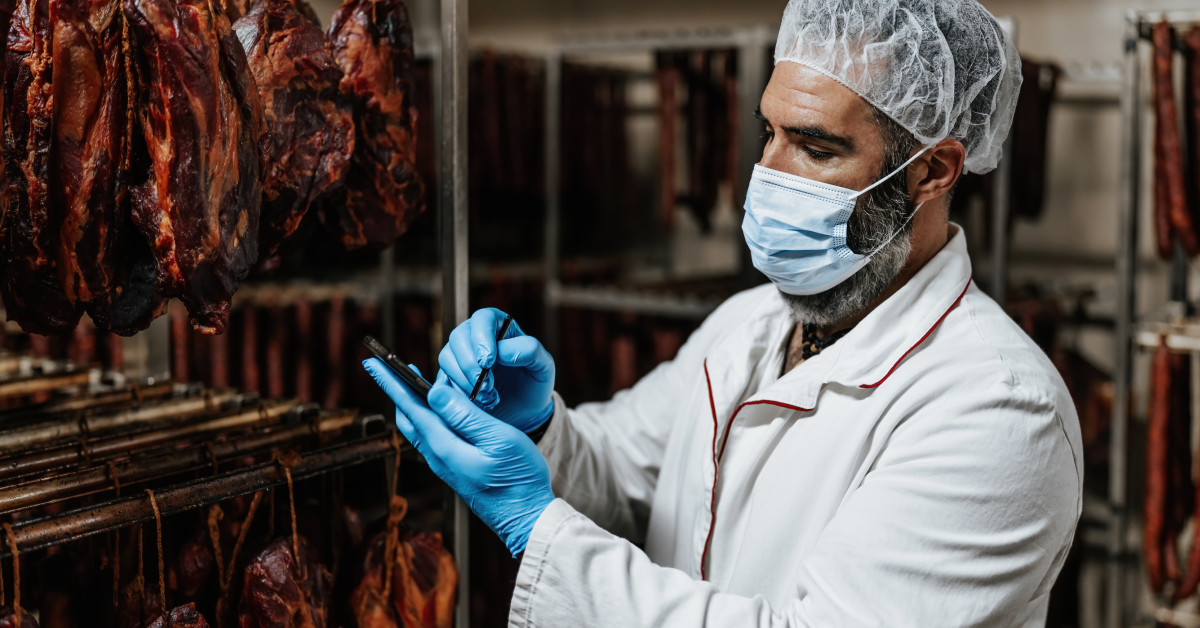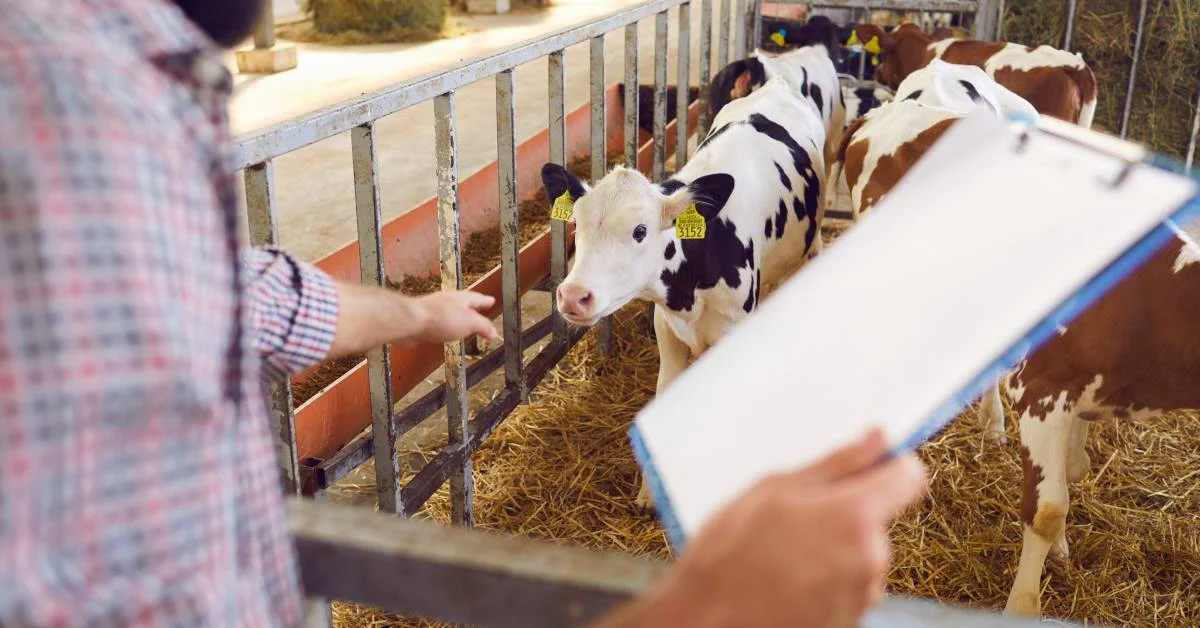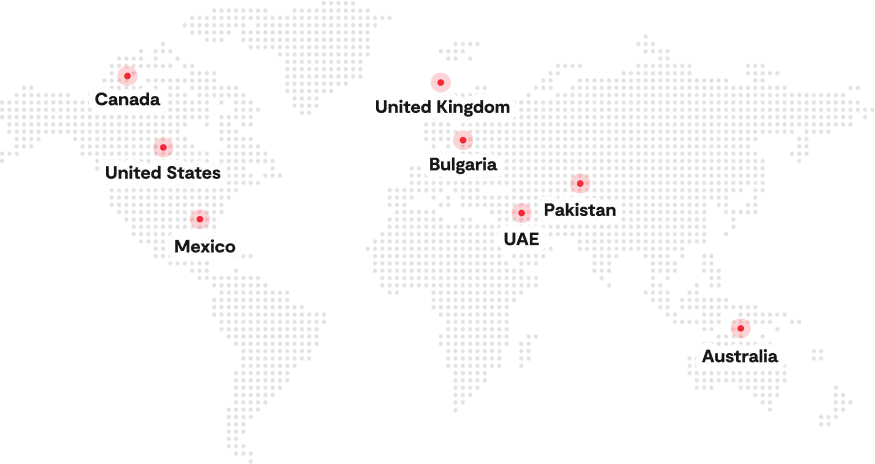In the meat processing industry, the stakes are higher than ever regarding ensuring food and meat processing safety. With increasing concerns surrounding foodborne illnesses and the financial repercussions of costly product recalls, processors must remain vigilant against the dangers posed by cross-contamination.
This critical issue threatens consumer health and can significantly damage a brand’s reputation and financial standing. Cross-contamination occurs when harmful pathogens, chemicals, or allergens transfer from one surface or food item to another, creating potential health risks.
In meat processing, this can involve microbial hazards such as bacteria and viruses, chemical risks from cleaning agents, and allergenic reactions stemming from improperly managed food contact surfaces. Given the complexity of modern meat processing operations, the potential for these risks to escalate is ever-present.
Fortunately, technological advancements equip meat processors with sophisticated tools to combat cross-contamination effectively. From software solutions designed for managing sanitation protocols to real-time contamination alerts and comprehensive supplier monitoring, these innovative tools provide a robust defense against the dangers of cross-contamination.
With the power of advanced meat processing tools, processors can enhance food and meat processing safety guidelines protocols and safeguard the health of their consumers. Keep reading this blog to understand how to prevent cross-contamination with advanced meat processing tools.
Understanding Cross-Contamination in Meat Processing
What is Cross-Contamination?
Cross-contamination in meat processing refers to the unintended transfer of harmful substances, such as bacteria, chemicals, or allergens, from one surface, product, or person to another. Cross-contamination can occur at any stage of the meat production process, making it a critical concern for maintaining food safety standards.
Cross-contamination can have profound implications, whether through direct contact between raw and cooked meats or improper sanitation procedures. It can lead to foodborne illnesses, product recalls, and significant business financial losses.
Types of Cross-Contamination
The three different types of cross-contamination include:
- Microbial Cross-Contamination: This type involves the spread of harmful microorganisms like bacteria (e.g., Listeria, E. coli, Salmonella) and viruses. Microbial contamination is often introduced through improper handling of raw meat, dirty equipment, or unsanitized surfaces. If not adequately managed, it can lead to serious health issues, including foodborne illnesses that endanger consumers’ health.
- Chemical Cross-Contamination: In meat processing, chemical contamination arises when hazardous substances like cleaning agents, sanitizers, or pesticides come into contact with meat. Even trace amounts of these chemicals can render meat unsafe for consumption. Chemical cross-contamination is particularly dangerous because it’s often harder to detect than microbial contamination.
- Allergenic Cross-Contamination: Allergenic cross-contamination occurs when allergens, such as gluten, soy, or dairy, inadvertently come into contact with meat products during processing. Even minimal exposure to allergens can trigger severe reactions in consumers with food allergies, making it essential for meat processing plants to manage allergen separation and avoid cross-contact rigorously.
Common Sources of Contamination in Meat Processing Plants
- Equipment: Improperly cleaned machinery, knives, or conveyor belts are familiar sources of cross-contamination in meat processing facilities. For example, raw meat can introduce harmful bacteria onto equipment, which can then transfer to other food items processed on the same machinery.
- Personnel: Workers who handle raw meat without following proper hygiene protocols can also contribute to cross-contamination. Hands, clothing, and protective gear that come into contact with contaminated meat can spread bacteria or allergens to other facility areas.
- Raw Materials: Contaminated raw meat can be a primary source of cross-contamination. Meat that is improperly stored or sourced from suppliers with poor food safety practices can introduce bacteria or pathogens into the production environment, increasing the risk of contamination spreading throughout the facility.
Risks of Cross-Contamination
- Health Risks: Cross-contamination in meat processing can have serious health consequences. Pathogens like Listeria and E. coli are often linked to contaminated meat, and exposure can lead to severe illnesses or even death. Outbreaks of foodborne diseases endanger public health and trigger widespread fear and mistrust of affected meat brands.
- Financial Implications: Beyond health risks, cross-contamination can be financially devastating. A single instance of contamination can lead to massive product recalls, costing companies millions in losses. Additionally, the long-term damage to a company’s brand reputation can result in decreased customer trust, leading to a significant loss of market share.
The Role of HACCP and Critical Control Points in Preventing Contamination
What is HACCP?
Hazard Analysis Critical Control Points (HACCP) is a systematic approach to food safety management that identifies, assesses, and controls hazards during food production, particularly in high-risk environments like meat processing plants.
HACCP’s importance in meat processing cannot be overstated. It provides a framework for systematically preventing contamination risks such as microbial growth, chemical residues, and allergen cross-contact.
The HACCP plan has seven principles, including hazard identification, determining critical control points (CCPs), establishing monitoring procedures, and implementing corrective actions when necessary.
Identifying Key Critical Control Points (CCPs)
Critical Control Points (CCPs) are the stages in the meat processing workflow where hazards are most likely to occur, and their prevention or reduction is crucial for maintaining food safety. In the context of meat processing, some of the key CCPs include:
- Cooking: This stage involves heating the meat to a specific temperature to kill harmful pathogens. Undercooking can lead to the survival of bacteria like Salmonella and E. coli.
- Slicing: Cutting can introduce contamination if equipment needs to be adequately cleaned and sanitized. Meat processing equipment hygiene matters since cross-contamination risks are exceptionally high at this stage, especially if raw and cooked products share the same slicing machinery.
- Packaging: Improper packaging can expose the product to contaminants from the environment. Additionally, the packaging process must ensure that allergens, chemicals, or other contaminants do not come into contact with the product.
Software’s Role in Managing Critical Control Points
Advanced software solutions are increasingly important in managing and monitoring critical control points (CCPs) in meat processing facilities. Traditional methods of monitoring and logging CCPs can be slow, inefficient, and prone to human error.
However, automated software systems can digitize HACCP plans in meat processing plants and help in real-time monitoring, ensuring compliance with safety regulations and providing timely insights into contamination risks. These advanced software and meat processing tools can continuously track contamination risk areas, log preventive actions, and alert operators when critical control points need attention.
For example, a food safety software can monitor cooking temperatures, detect improper handling during slicing, or flag packaging errors in real-time.
Automated Real-Time Tracking of Contamination Risk Areas
With automated software solutions, meat processing facilities can take contamination prevention to the next level. Real-time tracking allows for instantaneous detection of potential risks, providing operators with timely data to act before contamination spreads.
Automated systems also offer the ability to log preventive actions, helping facilities meet compliance requirements and maintain a clear audit trail. This ensures that the plant can quickly determine the root cause and address the issue if contamination occurs.
Equipment Sanitation and Tracking Tools
The Need for Sanitation Tracking
Equipment like high-speed slicers, dicing machines, and grinders is critical in meat processing. However, if they are not thoroughly cleaned and sanitized, they pose significant cross-contamination risks. Meat processing equipment regularly comes into contact with raw meat, fats, and proteins, which, when not cleaned properly, can become breeding grounds for harmful pathogens like Listeria, E. coli, and Salmonella.
Contamination can quickly spread from one batch to another through unclean machinery, leading to foodborne illnesses and costly product recalls. Given these risks, sanitation tracking has become indispensable in ensuring that meat processing equipment is always free from contaminants.
Challenges in Ensuring Sanitation
Meat processing equipment often has complex designs with hard-to-reach areas that can harbor hidden contamination. For instance, high-speed slicers and grinders may have tiny crevices or components that are difficult to dismantle for thorough cleaning.
Biofilm formation, a layer of microorganisms encased in a protective layer of organic material, can also develop on equipment surfaces. Once biofilms form, they resist conventional cleaning methods, making sanitation even more challenging. Over time, inadequate sanitation in these areas can lead to persistent contamination, endangering food safety and consumer health.
Advanced Sanitation Tracking Tools
Modern meat processing facilities are adopting advanced sanitation tracking meat processing tools to overcome these challenges to monitor and ensure thorough equipment cleaning. Sanitation management software is a vital part of meat processing tools.
It automates the logging of cleaning schedules, ensuring that all machinery undergoes routine and deep cleaning based on usage and contamination risk level. This software tracks the performance of cleaning procedures over time, ensuring compliance with sanitation standards and making the process more transparent for audit purposes.
Additionally, advanced meat processing tools are now available to alert teams when equipment requires deep cleaning, particularly in high-risk zones where contamination is more likely to occur.
Automated Cleaning Verification Systems
Automated cleaning verification systems and environmental monitoring solutions further enhance the sanitation process. These systems use sensors and other real-time data collection tools to verify whether cleaning has been performed effectively.
These systems help meat processing facilities maintain a high standard of hygiene, reduce cross-contamination risks, and ensure compliance with food safety regulations.
Area-Specific Contamination Alerts and Monitoring
Why Localized Contamination Monitoring Matters?
Different areas in meat processing plants have varying contamination risks. For instance, raw meat processing zones carry higher risks than cooked meat areas. Without proper segregation, contaminants from raw meat can spread to cooked products, leading to severe safety breaches. Effective monitoring of each region is crucial to prevent cross-contamination.
Advanced Technology for Area-Specific Alerts
Modern technology offers IoT-enabled sensors that track critical factors like humidity, temperature, and cleanliness in specific areas, helping to prevent contamination. These sensors, integrated with software systems, trigger immediate alerts if any area’s sanitation standards fall below acceptable levels. Real-time dashboards provide plant managers with a comprehensive overview, helping them address potential risks quickly and maintain food safety compliance across all plant zones.
Supplier Monitoring Tools and Traceability
Importance of Monitoring Suppliers
In meat processing, contaminated raw materials are a significant risk for cross-contamination, as issues with meat entering the supply chain can compromise the entire production process. To minimize these risks, it is essential to ensure that suppliers adhere to strict food safety standards and sanitation protocols.
Advanced Supplier Monitoring Solutions
Modern meat processing tools track supplier compliance, ensuring they meet regulatory requirements and follow proper sanitation procedures. Traceability systems provide visibility from farm to factory, monitoring each stage of the supply chain for transparency. These meat processing tools also offer real-time alerts based on historical data, flagging potential contamination risks from suppliers before they impact production, thus helping maintain safety and quality.
How Folio3 AgTech Meat Processing Software Helped a Leading Beef Processing Plant
Overview of the Company
The featured beef processing plant is a state-of-the-art facility in Washington, renowned for its commitment to high-quality meat production and food safety standards.
The company prioritizes the health and welfare of its cattle, employing over 24 food safety interventions and hosting 11 on-site USDA officials to ensure strict adherence to safety regulations.
Known for its dedication to premium quality, the plant integrates the latest industry practices to maintain rigorous compliance and product excellence, setting a benchmark for meat processing standards in the region.
Challenges Faced
Manual quality and compliance processes at the beef processing plant involved paper-based forms and spreadsheets, leading to delays in identifying quality deviations and making proactive decisions. Audits were challenging due to the time-consuming process of locating documents, and adapting to changes in USDA regulations could have been faster and more efficient.
The Need for Automation
The plant required an automated solution to improve food safety, reduce errors, save time, and reduce manual workload. The existing paper-based system needed to be updated, causing bottlenecks and making it challenging to maintain compliance with changing regulations.
The Solution: A Quality Management Software

Folio3’s meat processing software transformed the plant’s operations by:
- Tracking Inspection and Audit Activities: Automated tracking allowed the management to monitor field operations in real-time, reducing the number of quality deviations.
- Improving Decision-Making: The system provided a 360-degree view of ongoing processes, enabling managers to make informed decisions quickly.
- Streamlining Workflows: Automating data management digitized over 65% of workflows, including more than 100 forms, which eased the audit process and reduced manual efforts.
- Enhancing Reporting and Compliance: Integrated with Power BI, the solution facilitated reporting and trend analysis, enabling quick access for USDA officials through designated accounts.
Results
The solution streamlined quality assurance management, reduced workloads, minimized errors through automated corrective actions, and improved overall business effectiveness.
Conclusion
Preventing cross-contamination is essential for maintaining food safety and ensuring consumer trust in the meat processing industry. Companies have effectively minimized contamination risks and improved compliance with industry standards by implementing advanced meat processing tools like Folio3’s HACCP software and real-time contamination alerts.
Folio3 AgTech’s innovative solutions enhance operational efficiency and safeguard public health. Folio3’s expertise in meat processing software solutions is a valuable asset in the fight against cross-contamination for meat processors seeking to strengthen their sanitation protocols and protect their brand reputation.
FAQs
What is Cross-Contamination in Meat Processing?
Cross-contamination in meat processing refers to the unintentional transfer of harmful substances, such as bacteria, chemicals, or allergens, from one surface, product, or person to another. It can occur at any stage of meat production and poses significant risks to food safety and consumer health.
How can Advanced Meat Processing Tools Reduce Contamination Risks?
Advanced meat processing tools, such as HACCP software and real-time contamination alerts, help monitor sanitation conditions and manage critical control points effectively. These meat processing tools ensure compliance with food safety standards, track cleanliness, and provide immediate alerts for potential contamination issues.
What are the Health Risks Associated With Cross-Contamination in Meat Processing?
Cross-contamination can lead to serious health risks, including foodborne illnesses caused by pathogens like Salmonella and E. coli. These illnesses can result in severe health issues for consumers and costly product recalls for meat processors, jeopardizing brand reputation.
Why is Sanitation Tracking Essential in Meat Processing Facilities?
Sanitation tracking is crucial in meat processing facilities to ensure that equipment is thoroughly cleaned and free from contaminants. Proper sanitation prevents the spread of harmful pathogens, reduces the risk of foodborne illnesses, and helps maintain compliance with food safety regulations.
How can Folio3 AgTech Help Meat Processors Enhance Food Safety?
Folio3 AgTech provides advanced software solutions tailored for meat processing, including HACCP software, real-time contamination alerts, and supplier monitoring tools. These solutions enable processors to effectively manage sanitation protocols, reduce cross-contamination risks, and ensure compliance with food safety standards.







